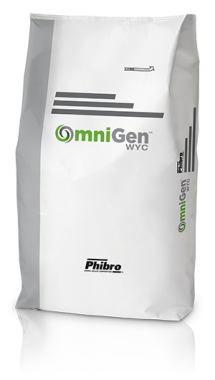Keys to Abating the Cumulative Effects of Heat Stress
Dr. Glenn Holub Shares how a Healthy Immune System is a Cow’s First Defense Against Heat Stress
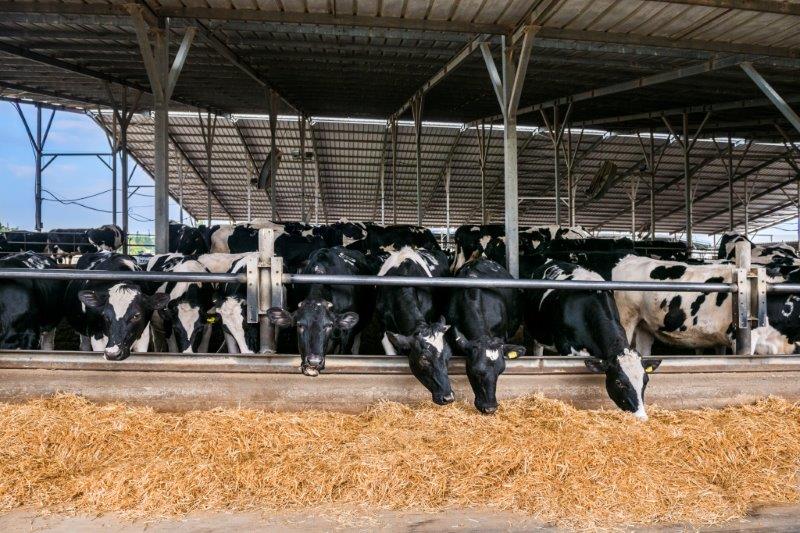
Before joining Phibro Animal Health Corporation as Executive Technical Services Manager for Dairy, Dr. Glenn Holub spent years studying and advising producers about heat stress, first as an animal nutritionist and later as a professor at Texas A&M University. Through these roles, he’s seen several constants. Each year, heat stress has a tendency to sneak up on producers. And healthy cows — those with strong immune systems — are better able to withstand periods of heat stress.
“Cows can be affected by heat stress when temperatures still feel comfortable to us,” says Dr. Holub. “Early in the spring, we see the initial signs of heat stress when temperatures reach about 77 degrees Fahrenheit with a 15% relative humidity. Then by Memorial Day, we see production begin to lag.”
Heat stress in dairy cattle is measured with the temperature-humidity index (THI), which uses a formula to combine the air temperature and humidity level to assess the level of thermal stress. At 77 degrees with 50% humidity, the THI is 72 — anything higher, and a producer is apt to see problems.
“In the southern U.S., it’s not uncommon to see temperatures climb to over 100 degrees,” says Dr. Holub. “Now we’re talking about a THI of 91 to 95, which is very dangerous to cows. They’re certainly not going to be productive in that environment.”
When dairy cows experience heat-related distress, producers will see increased respiration rates. Dr. Holub notes that rates of 120 breaths per minute are an indication that a cow is on the verge of experiencing a severe crisis. And the next day, heat stress is apt to hit her even quicker since her body will be less able to adjust as heat stress continues in duration.
Short-term heat stress lasts for two to four weeks and is typically experienced by herds in the northern states. The cumulative effects of heat stress are much more dire closer to the equator in the southern United States, which might see six or more consecutive weeks of high THI during the summer. During prolonged periods of heat stress cows can start feeling the effects of solar radiation as early as 8:00 a.m. or even at sunrise. Their respiration rates go up, feed intake goes down, and they retreat to darker areas of the barn to try to escape the heat. “This is extremely hard for a cow to overcome, especially if we’re not making corrections for her,” states Dr. Holub. “It’s a rough time to be a dairy cow if environmental adjustments aren’t made.”
Making Adjustments in Times of Heat Stress
“It’s all about cow comfort, because comfortable cows can do what they’re supposed to do: eat feed, chew their cud and make milk,” says Dr. Holub. “We see heat indexes in areas of the South for up to seven months at a time, so it’s not uncommon to see fans and misters running in all but the heart of winter in those areas to adjust the environment and keep cows comfortable and productive.”
Cows become inefficient during times of heat stress, in large part because they eat less. “The rumen produces a vast amount of metabolic heat by digesting feedstuffs, which is why cows eat less in the summer,” Dr. Holub explains. “Cows are not going to be very efficient when they have a low dry matter intake (DMI), so it’s important to monitor DMI.”
Dr. Holub says that producers are so close to their day-to-day routines that it can be helpful to bring in external eyes to help spot inefficiencies. Phibro offers its Stress Assessment for Dairy Cattle to help producers assess what conditions might lead to heat and other stress in the herd. For example, he says that holding areas can be susceptible because cows often walk some distance to get there and, once there, are in side-by-side proximity to each other. “They’d love to be the only cow in there and to be showered to get rid of that excess heat, but the opposite is true,” he says. “Fortunately, most parlors are considerably cooler and have much better ventilation, but we still need to be careful not to pack them in.”
Dr. Holub suggests that producers feed OmniGen® nutritional specialty product to help improve the cow’s immune system which can lead to a reduction in core body temperature and respiration rates. “Keeping the immune system highly functioning helps a cow better withstand the effects of heat stress and other stressors,” he says. “When I taught college, I offered my students an analogy: think of the last week of school, when you’re staying up all hours of the night for finals. You’re not eating right or getting enough sleep and you’re experiencing stress. Then you go home, and you wind up sick because your body is responding to all the stresses you’ve stacked up and to cracks in your immunological armor. Likewise, it’s important to keep cows comfortable and keep their immunity strong.”
Dr. Holub says he’s seeing more dairies feed OmniGen to their cows during the warmer months, if not year-round. “Many report seeing less panting and fewer cows standing during the heat of the day,” Dr. Holub reports. “More cows were inclined to lie down because they didn’t have to circulate the warmer blood deep inside their bodies to the skin’s surface to be cooled. They tell us that respiration rates are lowered as well. Indications are that OmniGen is an effective tool to use during heat stress — by enhancing the immune system the cow is better able to regulate body temperature, which not only helps cows stay cooler and more productive, but also supports healthy immune function leading to lower respiration rates and lower body temperatures.”
For more information on heat stress, contact your local dairy advisor or visit www.theOmniGenDifference.com. For additional insights from Dr. Holub, download his free webinar, “Dairy’s Most Profit-Draining Challenges: Heat Stress” on the Phibro Academy web site.
OG360722GLB ©2023 Phibro Animal Health Corporation. Phibro, the Phibro logo design, Healthy Animals. Healthy Food. Healthy World. and OmniGen are trademarks owned by or licensed to Phibro Animal Health Corporation or its affiliates.
Dairy Cattle Products
Learn how OmniGen nutritional specialty products are formulated to support your herd through some of your operation’s toughest challenges.





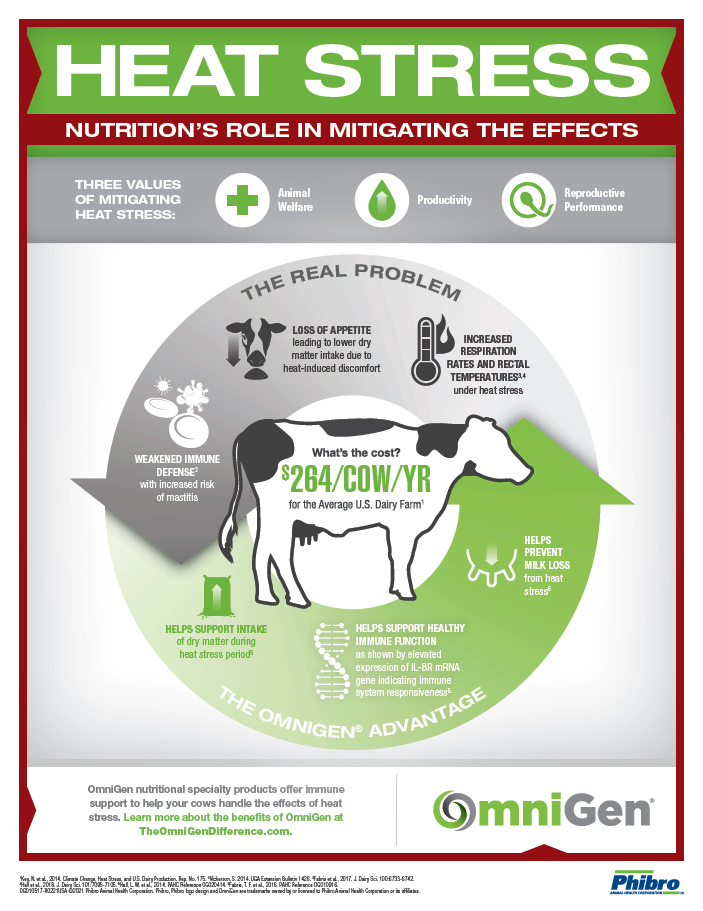
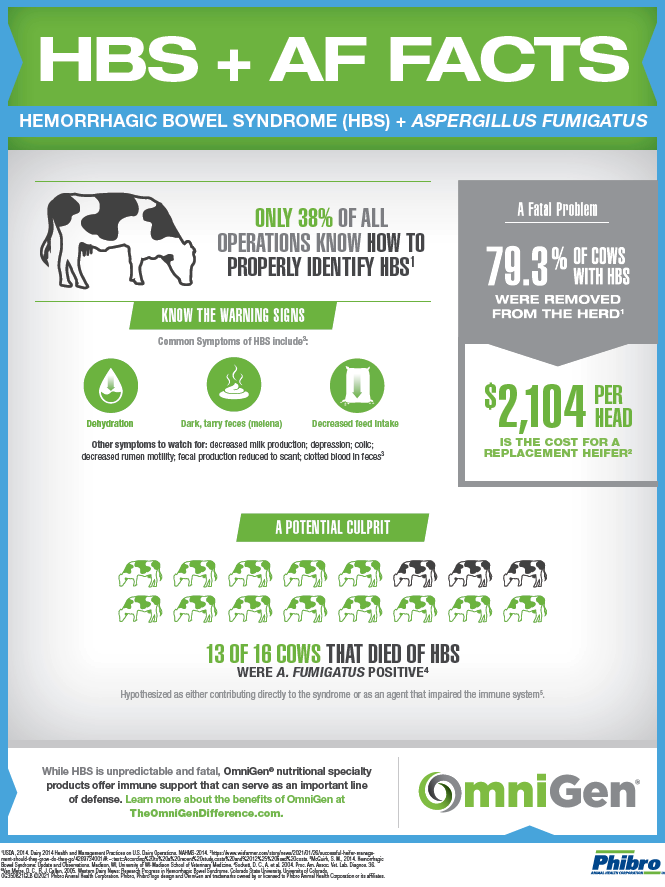
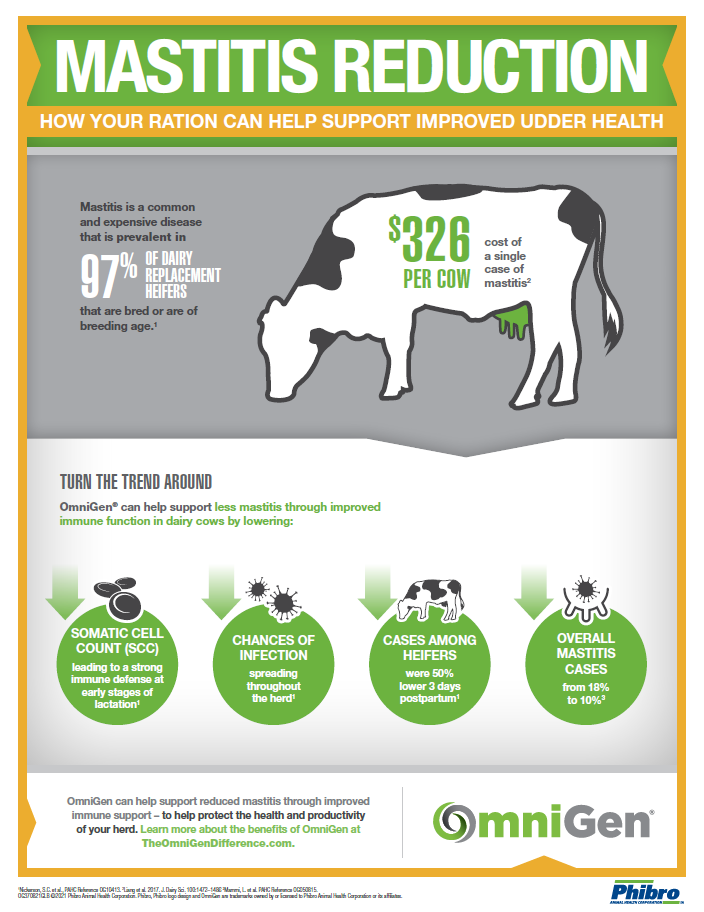
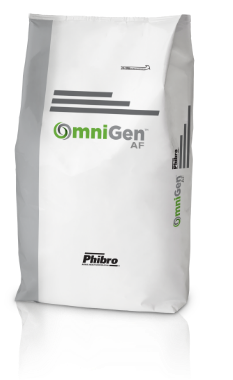
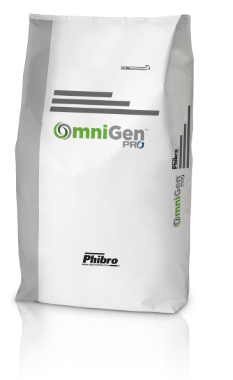
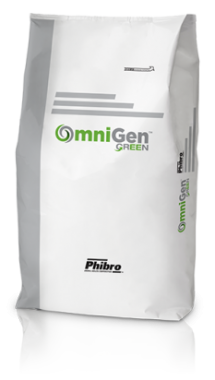
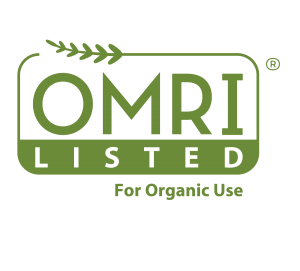 OmniGen Green is Organic Material Review Institute (OMRI) listed.
OmniGen Green is Organic Material Review Institute (OMRI) listed.